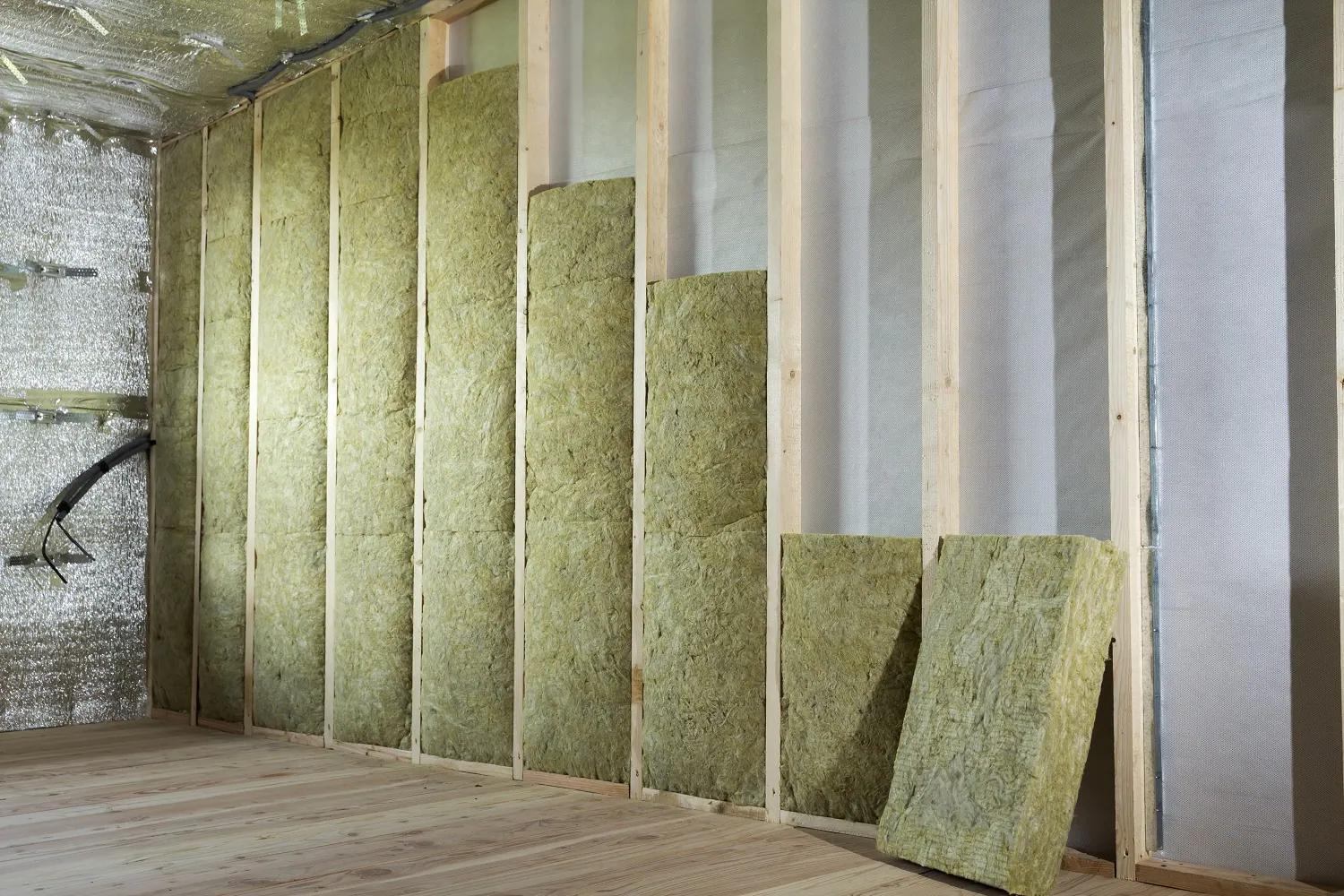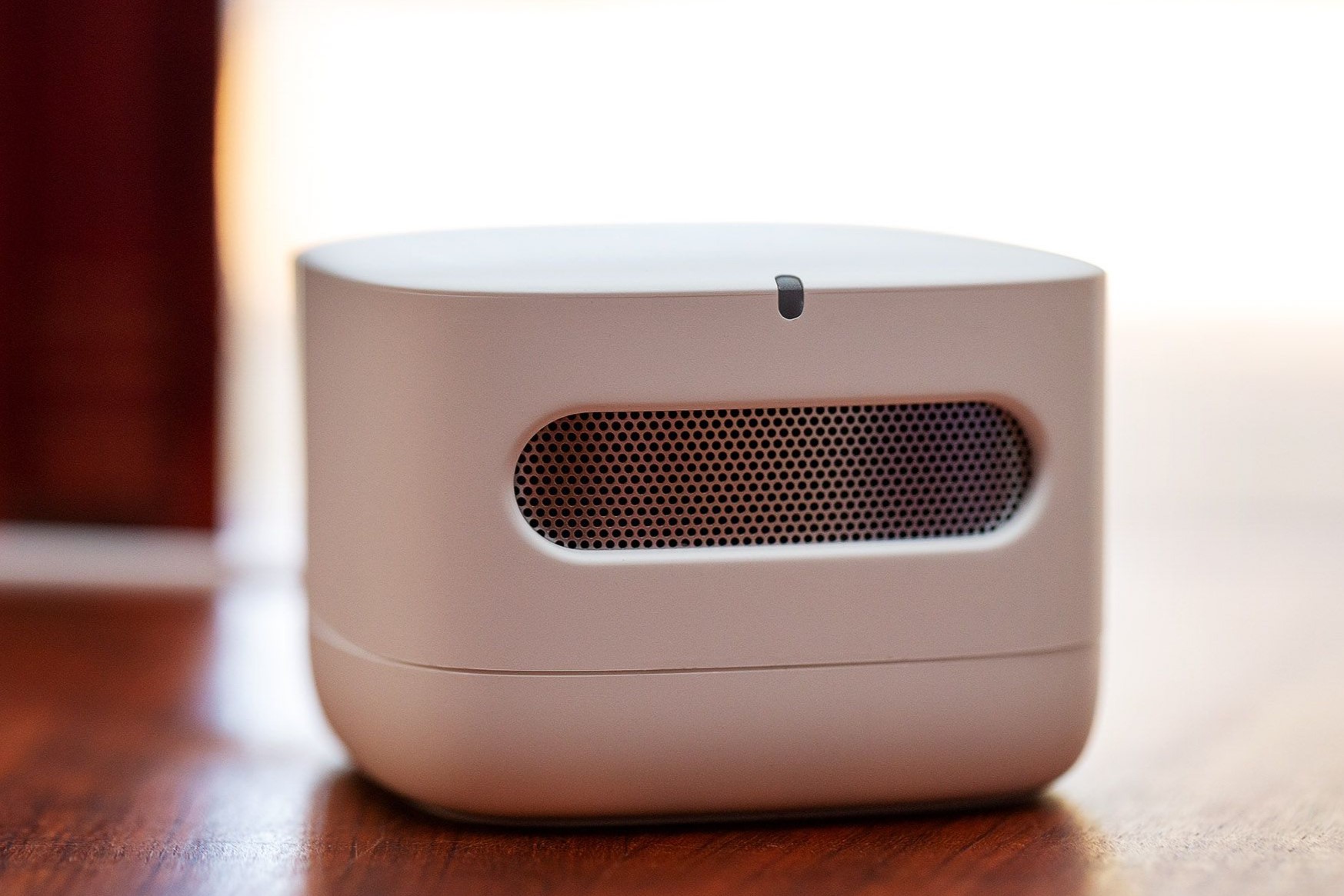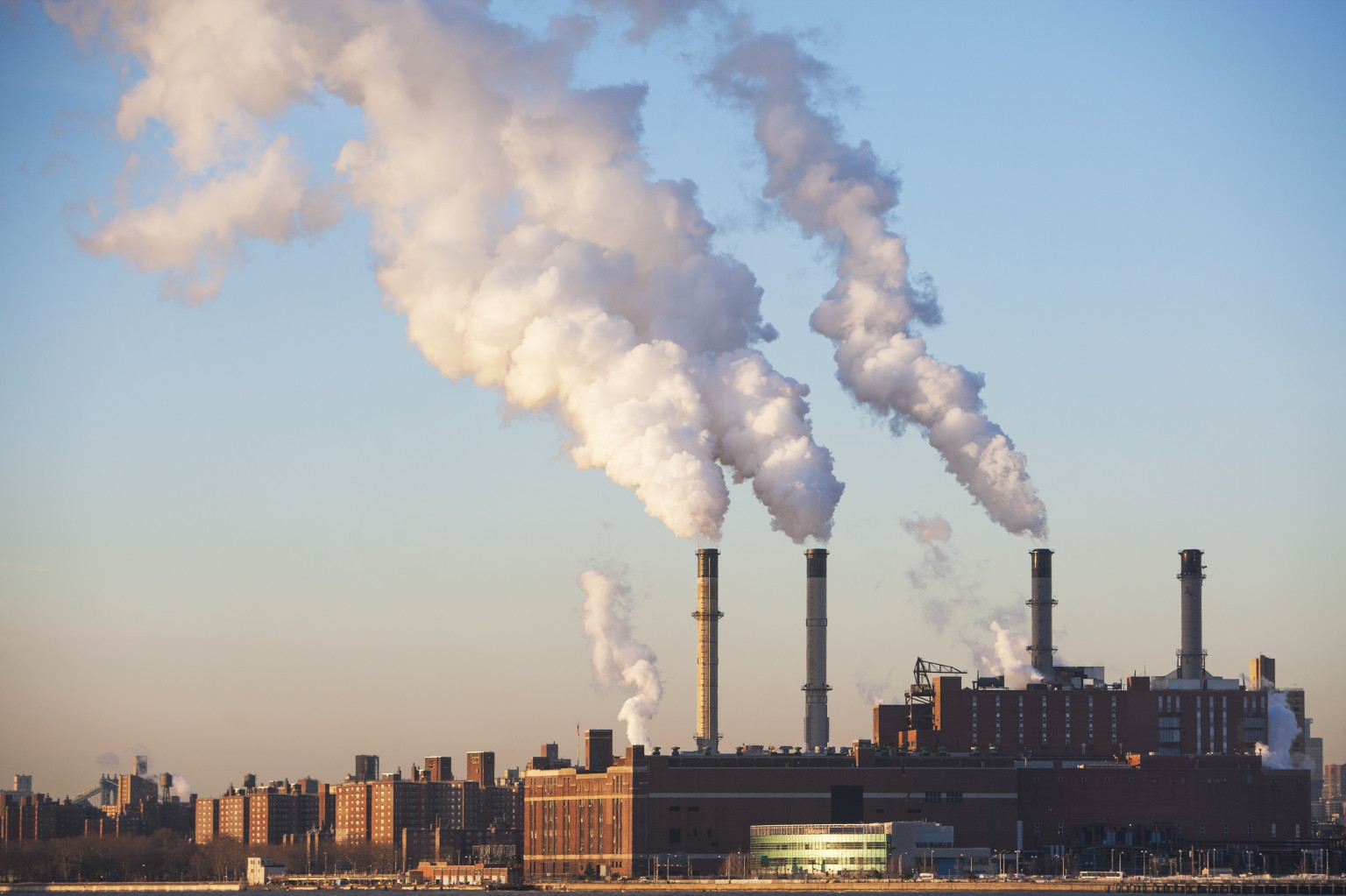Home>Furniture & Design>Outdoor Furniture>Why Is Indoor Air Pollution More Dangerous Than Outdoor Air Pollution


Outdoor Furniture
Why Is Indoor Air Pollution More Dangerous Than Outdoor Air Pollution
Published: January 15, 2024
Discover why indoor air pollution poses a greater threat than outdoor air pollution. Learn how to improve air quality with outdoor furniture and design.
(Many of the links in this article redirect to a specific reviewed product. Your purchase of these products through affiliate links helps to generate commission for Storables.com, at no extra cost. Learn more)
Introduction
When we think of air pollution, our minds often turn to images of smoggy city skylines and industrial emissions. However, the air inside our homes and workplaces can be equally, if not more, polluted than the air outside. Indoor air pollution poses a significant threat to our health and well-being, yet it often goes unnoticed. Understanding the differences between indoor and outdoor air pollution, as well as the sources and implications of indoor air pollution, is crucial for creating a safe and healthy environment for ourselves and our loved ones.
Indoor air pollution refers to the contamination of indoor air by harmful physical, chemical, or biological agents. These pollutants can have adverse effects on our respiratory and overall health, especially when we consider that the average person spends approximately 90% of their time indoors. Unlike outdoor air pollution, which is subject to environmental regulations and public awareness campaigns, indoor air quality is often overlooked. This article aims to shed light on the often underestimated risks of indoor air pollution and provide insights into its sources, health effects, and strategies for mitigation.
Key Takeaways:
- Indoor air pollution can be more harmful than outdoor air pollution due to diverse sources like cooking fumes, tobacco smoke, and building materials. It affects our health, especially when we spend 90% of our time indoors.
- To reduce indoor air pollution, we can improve ventilation, control pollution sources, use air purifiers, and promote smoke-free environments. These efforts can create healthier indoor spaces for everyone.
Differences in Indoor and Outdoor Air Pollution
While both indoor and outdoor air pollution pose risks to human health, there are distinct differences between the two in terms of sources, composition, and exposure.
- Sources: Outdoor air pollution primarily originates from vehicular emissions, industrial activities, and natural sources such as wildfires and volcanic eruptions. In contrast, indoor air pollution stems from a diverse array of sources within enclosed spaces, including cooking fumes, tobacco smoke, building materials, cleaning products, and inadequate ventilation.
- Composition: Outdoor air pollution consists of pollutants such as nitrogen dioxide, sulfur dioxide, particulate matter, and ground-level ozone, which are released into the atmosphere from external sources. Indoor air pollution, on the other hand, encompasses a broader range of contaminants, including volatile organic compounds (VOCs) from household products, radon gas seeping from the ground, and biological pollutants like mold, pet dander, and dust mites.
- Exposure: While outdoor air pollution affects individuals during outdoor activities and commutes, indoor air pollution exposes occupants to a continuous and often higher concentration of pollutants due to limited air circulation and the accumulation of contaminants within enclosed spaces.
Understanding these distinctions is pivotal in addressing the unique challenges posed by indoor air pollution. It underscores the importance of implementing targeted measures to improve indoor air quality and safeguard the health of occupants.
Sources of Indoor Air Pollution
Indoor air pollution can originate from a myriad of sources, many of which are integral to our daily lives. Recognizing these sources is crucial for effectively managing and mitigating indoor air quality issues.
- Cooking and Heating: The combustion of fuels for cooking and heating can release carbon monoxide, nitrogen dioxide, and particulate matter into the indoor environment, especially in homes with inadequate ventilation or malfunctioning appliances.
- Tobacco Smoke: Cigarette smoke contains over 7,000 chemicals, including hundreds that are toxic and about 70 that can cause cancer. Secondhand smoke poses a significant threat to the health of nonsmokers, particularly children and individuals with respiratory conditions.
- Building Materials and Furnishings: Volatile organic compounds (VOCs) emitted by paints, varnishes, carpets, and furniture can contribute to indoor air pollution. Additionally, formaldehyde, a common component in building materials, can off-gas and compromise air quality.
- Household Products: Cleaning agents, air fresheners, and personal care products often contain chemicals that can release VOCs and other hazardous substances into the air, impacting indoor air quality.
- Biological Contaminants: Mold, pollen, pet dander, and dust mites are common indoor allergens and can exacerbate respiratory conditions, leading to poor indoor air quality.
- Radon Gas: This colorless, odorless gas can seep into buildings from the ground, particularly in areas with high levels of uranium in the soil or rock. Prolonged exposure to radon is a significant risk factor for lung cancer.
- Poor Ventilation: Inadequate ventilation can lead to the accumulation of indoor air pollutants, as well as increased humidity levels, fostering the growth of mold and mildew.
By identifying these sources of indoor air pollution, individuals and organizations can take proactive steps to minimize exposure and create healthier indoor environments.
Health Effects of Indoor Air Pollution
Exposure to indoor air pollution can have profound and wide-ranging impacts on human health, affecting the respiratory system, cardiovascular health, and overall well-being. Understanding the potential health effects is crucial for raising awareness and implementing measures to mitigate indoor air quality issues.
Respiratory Health: Indoor air pollutants such as particulate matter, VOCs, and biological contaminants can exacerbate respiratory conditions such as asthma and allergies. Prolonged exposure to these pollutants may lead to the development or worsening of respiratory diseases, causing symptoms such as coughing, wheezing, and shortness of breath.
Cardiovascular Health: Certain indoor air pollutants, including fine particulate matter and carbon monoxide, can infiltrate the bloodstream and impact cardiovascular function. Long-term exposure to these pollutants has been linked to an increased risk of heart disease, stroke, and hypertension.
Neurological Effects: Some indoor air pollutants, such as lead and certain VOCs, have been associated with neurological issues, particularly in children. Lead exposure, often stemming from lead-based paints in older homes, can impair cognitive development and lead to behavioral disorders.
Cancer Risk: Radon gas, a prevalent indoor air pollutant, is a known carcinogen and a leading cause of lung cancer, especially among non-smokers. Prolonged exposure to radon in indoor environments poses a significant cancer risk, emphasizing the importance of regular testing and mitigation efforts.
General Well-being: Poor indoor air quality can contribute to a range of non-specific health issues, including fatigue, headaches, and irritation of the eyes, nose, and throat. These symptoms can impact daily comfort and productivity, underscoring the broader implications of indoor air pollution on overall well-being.
By recognizing the potential health effects of indoor air pollution, individuals, healthcare professionals, and policymakers can prioritize interventions to reduce exposure and protect public health.
Tip: Indoor air pollution can be more dangerous than outdoor air pollution because it can be more concentrated and contain harmful chemicals from household products, tobacco smoke, and poor ventilation. Regularly ventilate your home and avoid using harsh chemicals indoors to reduce indoor air pollution.
Vulnerable Populations
Certain groups within the population are particularly susceptible to the adverse effects of indoor air pollution, warranting targeted attention and protective measures to safeguard their health and well-being.
Children: Young children, especially infants and toddlers, are more vulnerable to the effects of indoor air pollution due to their developing respiratory and immune systems. Exposure to pollutants such as secondhand smoke, lead, and allergens can have long-lasting implications on their health and cognitive development.
Elderly Individuals: Older adults, particularly those with pre-existing respiratory conditions or cardiovascular diseases, are at heightened risk from indoor air pollutants. Reduced lung function and compromised immune responses make the elderly more susceptible to the health impacts of poor indoor air quality.
Individuals with Respiratory Conditions: Those with asthma, chronic obstructive pulmonary disease (COPD), and other respiratory ailments are more sensitive to indoor air pollution, as exposure to irritants and allergens can trigger or exacerbate their symptoms, leading to respiratory distress and reduced quality of life.
Immunocompromised Individuals: People with compromised immune systems, such as individuals undergoing chemotherapy or organ transplant recipients, are at increased risk of infections and health complications from exposure to biological contaminants present in indoor environments.
Low-Income Households: Socioeconomic factors can influence exposure to indoor air pollution, with low-income households often facing inadequate housing conditions, limited access to clean cooking technologies, and a higher prevalence of indoor pollutants. This disparity underscores the importance of addressing environmental justice and providing equitable solutions for vulnerable communities.
Recognizing the heightened vulnerability of these populations is essential for tailoring interventions, policies, and educational initiatives to protect those most at risk from the impacts of indoor air pollution.
Read more: Why Is Indoor Humidity Lower Than Outdoor?
Strategies to Reduce Indoor Air Pollution
Implementing effective strategies to mitigate indoor air pollution is essential for creating healthier indoor environments and minimizing the associated health risks. By addressing the sources of indoor air pollutants and improving ventilation, individuals and organizations can significantly enhance indoor air quality. Here are several strategies to reduce indoor air pollution:
- Proper Ventilation: Adequate ventilation is critical for diluting and removing indoor air pollutants. Opening windows, using exhaust fans in kitchens and bathrooms, and maintaining HVAC systems can help promote air circulation and reduce the buildup of contaminants.
- Source Control: Identifying and minimizing the use of products and materials that release harmful pollutants, such as switching to low-VOC paints, choosing natural cleaning products, and avoiding smoking indoors, can effectively reduce indoor air pollution at its source.
- Air Quality Monitoring: Regular monitoring of indoor air quality through the use of air quality monitors can provide valuable insights into pollutant levels and guide targeted interventions to improve air quality.
- Air Purification: Utilizing air purifiers equipped with high-efficiency particulate air (HEPA) filters can help remove airborne particles, allergens, and other pollutants, contributing to cleaner indoor air.
- Radon Testing and Mitigation: Testing for radon gas in homes and implementing mitigation measures, such as sealing foundation cracks and installing ventilation systems, is crucial for reducing the risk of radon-related health effects.
- Maintaining HVAC Systems: Regular maintenance of heating, ventilation, and air conditioning (HVAC) systems, including changing filters and addressing any issues promptly, is essential for ensuring optimal indoor air quality.
- Promoting Smoke-Free Environments: Encouraging and enforcing smoke-free policies in homes, workplaces, and public spaces can significantly reduce exposure to secondhand smoke and its associated health risks.
- Educational Outreach: Providing education and awareness campaigns on indoor air quality, including the identification of common pollutants and best practices for maintaining a healthy indoor environment, can empower individuals to take proactive steps to reduce indoor air pollution.
By adopting these proactive strategies, individuals, building managers, and policymakers can work collaboratively to create indoor environments that promote clean, healthy air for occupants.
Conclusion
Indoor air pollution represents a significant yet often overlooked threat to public health, impacting individuals across diverse settings, from homes and schools to workplaces and public buildings. The distinct sources and composition of indoor air pollutants, coupled with the prolonged exposure experienced by occupants, underscore the urgency of addressing this pervasive issue.
By understanding the differences between indoor and outdoor air pollution, recognizing the sources of indoor air pollutants, and acknowledging the potential health effects, we can take meaningful steps to improve indoor air quality and protect the well-being of occupants, especially vulnerable populations such as children, the elderly, and individuals with pre-existing health conditions.
Strategies to reduce indoor air pollution, including ventilation improvements, source control, air purification, and educational initiatives, offer actionable pathways toward creating healthier indoor environments. These efforts, combined with regulatory measures and public awareness campaigns, are essential for fostering a culture of indoor air quality consciousness and driving positive change.
Ultimately, prioritizing indoor air quality is a collective responsibility that necessitates collaboration among individuals, communities, and policymakers. By elevating the importance of indoor air quality and implementing targeted interventions, we can cultivate environments that support respiratory health, overall well-being, and a higher quality of life for all.
Through ongoing commitment, education, and advocacy, we can pave the way for cleaner, healthier indoor air and a future where indoor environments nurture and sustain the health of occupants.
Frequently Asked Questions about Why Is Indoor Air Pollution More Dangerous Than Outdoor Air Pollution
Was this page helpful?
At Storables.com, we guarantee accurate and reliable information. Our content, validated by Expert Board Contributors, is crafted following stringent Editorial Policies. We're committed to providing you with well-researched, expert-backed insights for all your informational needs.















0 thoughts on “Why Is Indoor Air Pollution More Dangerous Than Outdoor Air Pollution”